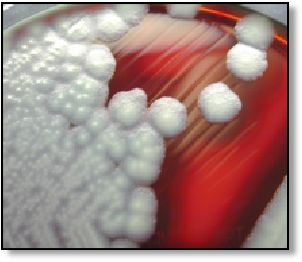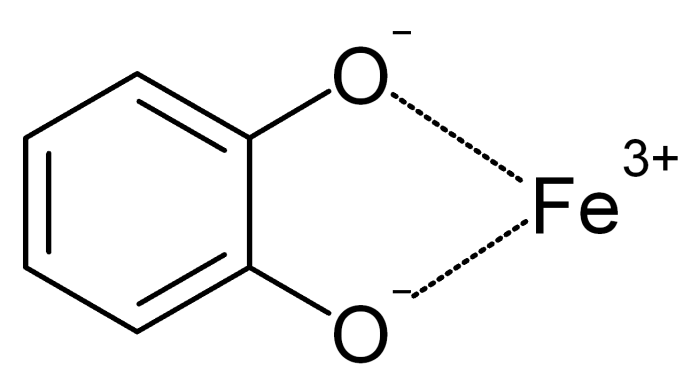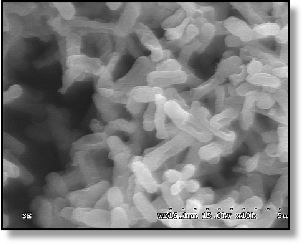Nutrition
Often when we think of getting our daily nutrition, we think about breakfast, lunch, and dinner. We go and grab our food at these times of day and ingest it, that's it. We rarely have to deal with the a situation where the environment is poor and nutrients are scarce. But for Bacillus cereus, it's a very different story. What does Bacillus cereus feed on? How does it feed? Look through this page to find out!!
 Trophic Level- Bacillus cereus
is a heterotrophic feeder. Heterotrophic in Latin translates to hetero=
"another" trophic="nutrition". This means that to be heterotrophic, you feed
on other organisms to acquire you nutrition. Also, Bacillus cereus can be classified as a parasitic organism,
because it utilizes hosts such as humans and insects.
Trophic Level- Bacillus cereus
is a heterotrophic feeder. Heterotrophic in Latin translates to hetero=
"another" trophic="nutrition". This means that to be heterotrophic, you feed
on other organisms to acquire you nutrition. Also, Bacillus cereus can be classified as a parasitic organism,
because it utilizes hosts such as humans and insects.
Whom they feed on-As pointed out in the
habitat section, Bacillus
cereus can be found living in the sediment, a food which it
contaminated, or another heterotrophic organism that ingested the food
contaminated
with Bacillus cereus. It is able to
survive in all these habitats partially due to its ability to metabolize a
range of compounds such as proteins, amino acids, carbohydrates, and
peptides from the surrounding environment.

Iron acquisition- Iron is a very important nutrient for the growth and proliferation in most bacteria species. It is often very scarce for bacteria, unlike us, they are unable to receive their iron from a diet, they must obtain it through the environment, which has very low concentrations of iron. Bacillus cereus has been known to acquire iron by secreting two siderphores, which are small, high-affinity compounds released by microorganisms that are strong iron binding agents, bacillibactin and petrobactin. In areas of high iron concentration, Bacillus cereus utilizes hemoglobin and ferritin to acquire iron.
The effect of endospores on nutrition- When the environment is unfavorable, such as poor temperature or lack of nutrients, Bacillus cereus will undergo a process known as endosporulation. After the eight hour process of endosporulation is complete, and endospore has been formed. In this non-vegetative state, the DNA of the organism is stored and protected from the outside environment. So how does this effect the nutrient requirements of the organism? While in the formation of an endospore can survive without any nutrients. To read more on endospores, go to adaptations.
 Distribution of nutrients in
Bacillus cereus- Unlike humans and
many other members of the animal kingdom, Bacillus
cereus and all other bacteria do not possess a circulatory
system. In larger organisms, they rely on a circulatory system to transport
nutrients to all their cells in the body. Due to their small size, bacteria
do not have a circulatory system and can simply rely on the process of
diffusion, the movement of particles from areas of high concentration to
lower concentrations, to distribute the nutrients.
Distribution of nutrients in
Bacillus cereus- Unlike humans and
many other members of the animal kingdom, Bacillus
cereus and all other bacteria do not possess a circulatory
system. In larger organisms, they rely on a circulatory system to transport
nutrients to all their cells in the body. Due to their small size, bacteria
do not have a circulatory system and can simply rely on the process of
diffusion, the movement of particles from areas of high concentration to
lower concentrations, to distribute the nutrients.
How Bacillus cereus metabolizes
aerobically- In the presence of
oxygen, Bacillus cereus undergoes metabolism in a way that is
similar to us! Metabolism, more specifically catabolism, is the process
where an organism breaks down organic material for the production of energy.
In the case of Bacillus cereus, the organic material first goes
through glycolysis. In glycolysis, this organic material, usually in the
form of glucose, is broken down into pyruvate. During this process ATP
(adenosine triphosphate) is produced, which is energy for cells. Check out a
rap on glycolysis
here! The pyruvate produced then go through a process known as the Kreb's cycle. Here a
series or redox reactions occurs, which results in the production of more
ATP. For a further explanation of the Kreb's cycle, click
here.
So they are efficient in gathering nutrients and surviving, but how on earth
do these things keep reproducing? Click
here to find out!
MultipleOrganisms.net
Home page
Contact me